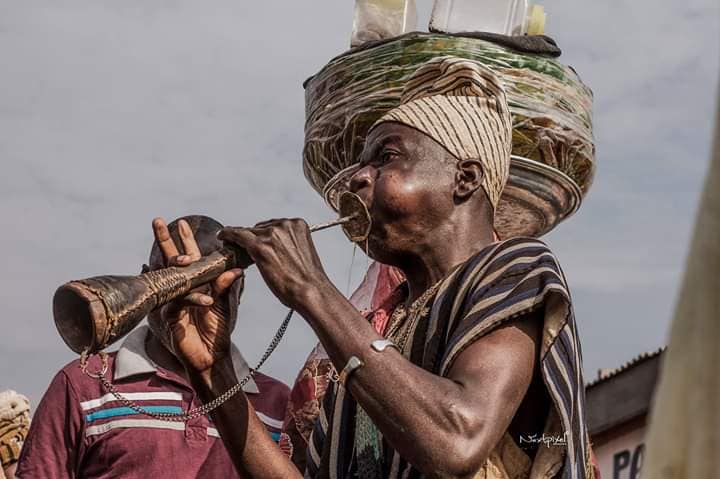Source: Ghanaian Museum / Mumuni Y Yunus.
At the time the king who reigned was Ya Na Andani II (popularly called Andan Naanigoo) and he said that his kingdom, Dagbon, would not be taken over by the white-man and that he would protect it at all cost.
But his kingdom was threatened by the Europeans from all directions – from the south by the Germans, from the West by the British and from the North by the French. In all Dagbon resisted colonialism for several years.
Following their resistance against foreign authority, on 3rd December 1896, the Dagbamba tribesmen met and launched an attack on the heavily armed German Schutztruppe and Askari paramilitary police accompanying the Lieutenant Valentin von Massow on his way to their capital at the village of Adibo, who had been sent by the German colonial administration to quell the rebellion.
One man whose name comes out for his bravery on the battle days in 1896 was the chief of Gbungbaliga, Kanbon-nakpem Ziblim. He had promised the Ya Na that he would apprehend any white-man who would step foot in Dagbang.
This chief warrior was indeed a remarkable soldier and fighter, well built, brave and an inspiration to his troops. He was affectionately called Kanbon-nakpem Wohu and rode a white stallion horse, carried two guns and a sword to match his status.
The Dagbamba fighters suffered significant losses on the second day of the battle and yielded after their capital Yendi was razed to the ground on December 4 1896. Defeat of the Dagbamba enabled the German Empire to complete establishing the Togoland protectorate, which encompassed the eastern part of the Kingdom of Dagbon. The western part of the Kingdom was released to the British and incorporated into the British Empire.
The Gbewaa Palace which is the seat of the King of Dagbon and has stood since the mid-1500s, was burnt down by the Germans in the Battle of Adibo in 1896.
Mumuni Y Yunus.
The Battle of Adibo fell on a Friday, a Yendi market day; and market days that fall on Fridays are special and attended in a grand style even up to this day. These market days are called Alizumma-koofe in the local parlance, because in the olden days young women decorated themselves beautifully with koofe (a kind of beads) around their waists to show to young men at the market.
The battle of Adibo is remembered in Dagbang as a solemn occasion, the Ya Na stays indoors and must not appear in public on any market day that falls on a Friday (Alizumma koofe).
The Adibo community, which is sited on the Yendi-Bimbilla in the village where the Germans first came into contact with the Dagomba forces at the Battle of Adibo, till date, according to some residents, traces of the war are still very visible at the specific place of the battle and somewhat sacred now. This historical area could be developed to become a tourist site.
The graves of the notorious slave raider, Babato, the German cemetery in Yendi where most of the victims of the Adibo Battle were laid to rest, could all be mapped as very attractive tourist sites. With all these, the Dagbon capital could easily become a tourist destination for local and foreign tourists.
Mumuni Y Yunus.








